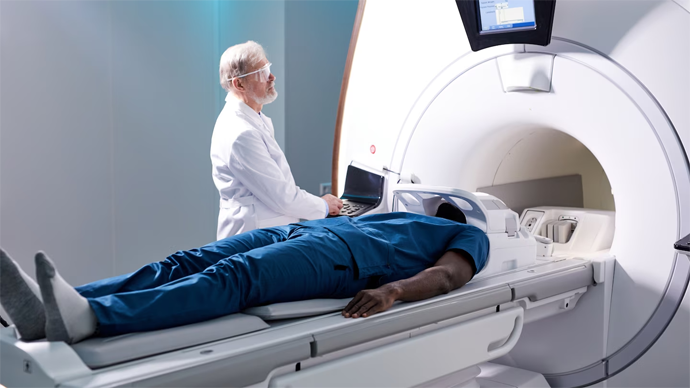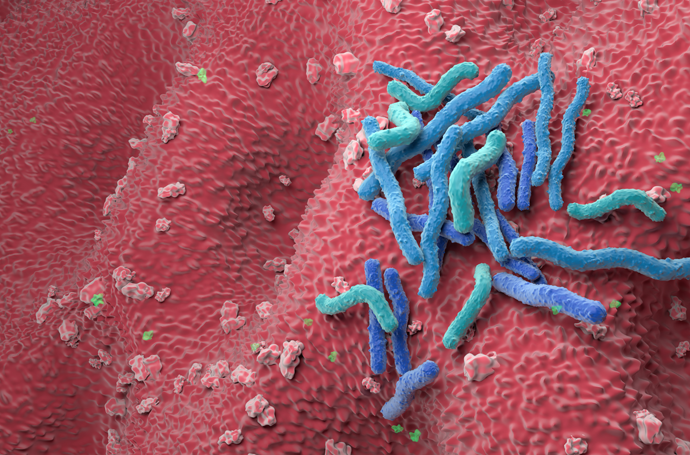axetris’ laser gas detectors used in respiratory gas analysis
Early Detection of Diseases Through Respiratory Gas Analysis Saves Healthcare Costs
On top of a global pandemic, the year 2022 was also financially demanding for people around the globe. Inflation combined with price increases in consumer goods and fuel made it difficult for many to budget. There was also a sharp rise in healthcare costs and surprisingly, the causes for it were not only rooted in the pandemic.

The Better the Health Care System, the Higher the Costs
Since the onset of the Corona pandemic, there has been a renewed focus on the importance of health for most people. But the better a country’s healthcare system and available medical technologies are, the more costly this typically becomes for society. For example, healthcare in the U.S. is considered vvery advanced, but consumed a total of 3.3 trillion in 2016. That accounted for almost 18 % of it gross domestic product (GDP). On average, health care costs in the 35 OECD countries amount to about 9 % of the GDP. What exactly do these costs consist of?
On the one hand, the development, application and marketing of medical devices and drugs play a major role. In the past, diagnostic and therapeutic techniques and drugs were less costly, but at the same time often less effective as well.

Many diseases or injuries could not be treated effectively with the available resources. This is to the detriment of patients and their quality of life. Thanks to new scientific findings and modern technologies, completely different possibilities are opening up today, but they also cost more money.
On the other hand, the need for customized medical diagnosis and therapy is a major cost factor. Comprehensive treatment and consistent attention to individual patient needs are becoming increasingly important for many people. There is more focus on one’s own health, and medicine should do justice to this. Whereas in the past personal care by the family doctor was prioritized, today specialists are quickly consulted and second opinions are obtained. And one thing is clear: The more personnel effort is behind a diagnosis and/or therapy, the higher the costs will be.
Early Detection of Diseases Through Respiratory Gas Analysis Saves Healthcare Costs
Another factor is the early detection of diseases. The situation with patients is exactly the same as the development of a new product: The later a possible problem is discovered, the more effort and costs it causes.
With many diseases, it is not so easy to detect them in time. Flu usually makes itself felt very quickly. Within a few days, sufferers are incapacitated in bed due to severe symptoms. Cancer, on the other hand, is a very different story. Symptoms develop very slowly and are also very non-specific. It is not uncommon for those affected to notice nothing for years, or to have only very minor symptoms, while a tumor continues to grow unhindered. If the symptoms are at some point so pronounced that a doctor is consulted, therapy is often only possible with drastic measures and at great financial expense, or in the worst case even too late.
A very promising approach to early detection of disease is respiratory gas analysis. The individual footprint of a breath sample allows valuable conclusions to be drawn about specific biomarkers and thus changes in health status. There is still a long way to go before this is reliably possible in diseases such as cancer.

The early detection of many other diseases, however, this is no longer a dream of the future, but has already become part of everyday medical practice. For example, gastrointestinal diseases such as bacterial overgrowth or food intolerances are detectable in the breath via the gases hydrogen (H2) and methane (CH4). Due to irregular digestion, these gases are produced in the gastrointestinal tract by fermentation and released into the lungs via the blood. Similarly, it is already common practice for the detection of Helicobacter pylori infections. This bacterium settles in the stomach lining and can cause inflammation. It is also considered to cause stomach cancer. Because it is estimated that half of the world’s population lives with this bacterium, but few people experience symptoms from it, screening for early detection is very important. This is done by detecting isotope-labeled carbon dioxide produced by the bacterium in the breath of patients after having a special test meal.
Laser Gas Detectors from Axetris in Respiratory Gas Analysis
Axetris makes an important contribution to these pioneering applications in medicine with gas measurement technology. Laser gas detectors (LGD) from Axetris have been an important component of medical devices for breath gas analysis for years. They enable early detection of diseases and associated cost savings. The earlier diseases are diagnosed, the more favorable and promising their therapy. This benefits patients and the entire healthcare system
Find medical gas sensing products of axetris; https://www.axetris.com/en/Measuring-gases/Medical-Technology
News Categories
- » NEWS HOME
- » Automation & Robotics
- » Industry 4.0
- » Material Handling
- » Sensors
- » Quality & Testing
- » Machine Vision
- » Laser & Optics
- » Metalworking
- » Motion Control & Drives
- » Hydraulics & Pneumatics
- » Process Industry
- » Renewable Energy
- » Agriculture
- » Home & Office Furniture
- » Environmental Tech

